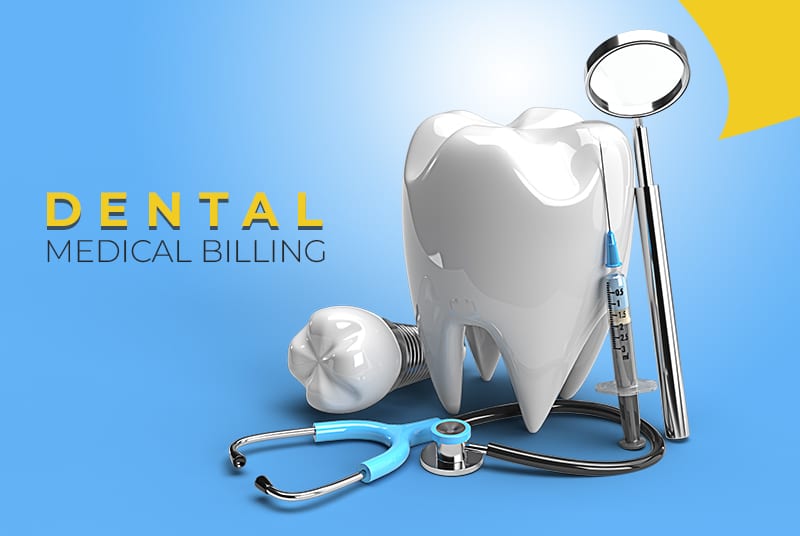Frenectomy procedures are performed primarily on infants, and it involves the removal of one or both frena from the mouth. As per the statistics given by the American Academy of Pediatric Dentistry, the number of frenotomy/frenectomy procedures performed is growing with a 90 percent increase in recent years. As the ADA (American Dental Association) changes the CDT (Current Dental Terminology) codes frequently, dental practices are required to adopt the changes and ensure accuracy in their claims. A dental billing company can help with complete and accurate documentation of dental procedures.

Stop struggling with complex dental billing regulations and let us handle it for you.
Contact us for reliable dental billing services!
Frenectomy – A Covered Dental Procedure
Frenectomy is considered medical in nature due to the following two reasons:
- There is a problem feeding the newborns
- It is required to correct congenital malformation( Ankyloglossia)
It implies that a frenectomy is medically necessary and is accompanied by the following symptoms, according to provcomm.ibx.com:
- Difficulty feeding/eating
- Difficulty chewing ( mastication)
- Difficulty swallowing
- Speech impairment or difficulty with articulation
The procedures used to treat the lingual frenum (other than for ankyloglossia), the labial frenum and the buccal frenum are considered dental procedures. Dental practices have to take note of the fact that they are not covered under medical plans and are considered benefit contract exclusions.
CPT Codes for Frenectomy or Frenotomy
- 41010
In this procedure, the provider makes an incision in the lingual frenum, a membranous ridge under the tongue, to allow greater movement of the tongue in patients with ankyloglossia.
- 41115
In this procedure, the provider makes an incision at the base of the tongue and excises the frenum.;
- 40806
The provider incises the labial frenum, the tag of tissue in the center of the upper or the lower lip that attaches the lip to the gums of the patient. The provider does not remove the frenum. The provider commonly performs this procedure to release a tight frenum and its surrounding tissues.
- 40819
In this procedure, the provider removes the labial or buccal frenum, each of which is a membrane structure in the mouth. Labial refers to the lip and buccal refers to the cheek.
- 41115
In this procedure, the provider makes an incision at the base of the tongue and excises the frenum.
ICD-10 Codes
- Q38.1
Ankyloglossia
For feeding difficulties:
- R63.3 – Feeding difficulties
- P92.5- Neonatal difficulty in feeding at the breast
- P92.8- Other feeding problems of newborn
- P92.9- Feeding problem of newborn, unspecified
For childhood articulation problems:
- F80.0- Phonological disorder
- F80.89-Other developmental disorders of speech and language
- F80.9- Developmental disorder of speech and language, unspecified
CDT Codes
The below-mentioned codes are newly added CDT codes and are effective from 01/01/2021.
- D7961- Buccal / labial frenectomy (frenulectomy)
- D7962- Lingual frenectomy ( frenulectomy)
Guidelines to Follow While Claiming Dental Insurance
- To facilitate coverage and payment, submitting the claim with x-rays alone is insufficient.
- The above-mentioned codes are applicable only if the procedure involves removing a patient’s frenum.
- Carefully consider the patient’s plan limitations and exclusions.
- The claims of this procedure are limited to once per lifetime, per tooth.
- If connective tissue graft or pedicle graft is reported on the same visit as the frenectomy, the frenectomy is considered inclusive with no additional payments.
- According to dentistryiq.com, a narrative should also be included which indicates the following:
- Amount of gingival recession in millimetres
- The severity of gingival inflammation
- The level of sensitivity
- Bleeding on probing
- The claim form should be accompanied by pre-op and post-op x-rays in addition to periodontal charting.
General Guidelines for Medical Billing for Dental Surgery
According to dentalproductsreport.com, to successfully place dental claims, the following has to be accurately documented:
- The primary presenting situation
- Any secondary, supporting diagnosis
- The diagnosis code for the treatment
- Surgical pre-authorization
- Medical necessity, in the form of a letter of medical necessity
- Support from the patient’s primary care physician, in the form of a supporting letter of medical necessity
- The procedures performed at each surgery location
This is vital information that is required by the medical insurance company to get a comprehensive understanding of the care provided.
- Prior-authorization
Frenectomy procedures require a pre-authorization. The insurer has to be contacted via phone to explain the procedure and the date. Reimbursement claims will be rejected if pre-authorization is not obtained.
- Verification of insurance
Dental eligibility verification is essential to gather information about the coverage for this surgery. The following information must be collected from the patients first:
- Name of the primary insured
- Social security number of the primary insured
- Insurance carrier
- ID number
- Group number
- Contact details of the insurance company like phone number, web address and residential address for submitting claims.
- Proving medical necessity
A frenectomy is performed as a medically necessary procedure. Accurate medical coding is vital. Coding should inform the payer that the procedure was performed and the reason that the patient’s concern was medical rather than just a dental problem
- Accurate coding
Appropriate ICD-10 codes and CPT codes have to be incorporated in the Letter of Medical Necessity. According to Dental Practice Management, dental practices have to limit themselves to entering only four diagnostic codes in the Letter of Medical Necessity. The most important procedure should be listed first, followed by the procedures of a lesser importance.
- Documenting and submitting the claims
After the dental surgery, the next important step is filling in the claims submission form correctly. A thorough look over the forms is necessary to identify typos or missed information. The claim must be submitted to the insurer with appropriate documentation. Lab or diagnostic imaging studies are also to be submitted along with the claims as supporting documents.
Compared to billing for other medical specialities, dental billing is complex. An experienced dental billing company can help dental practices to improve dental billing collections and ROI, particularly for services like frenectomies where prior authorization is required.





